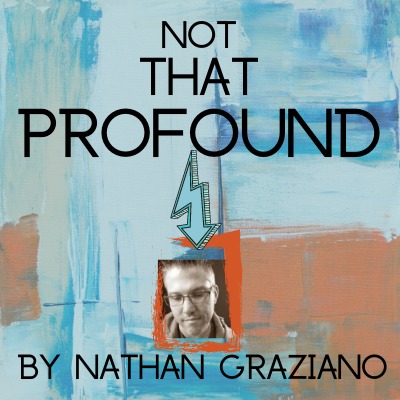

You’re driving to work at 6:30 a.m. on a Tuesday morning, listening to sports talk radio and sipping from your coffee mug. As you merge onto the interstate, it starts.
At first, it’s a vague tightness in your chest, perhaps acid reflux from the coffee. Then your mind grabs hold, and it escalates into something far more ominous. A heart attack? A stroke? Now you’re having palpitations.
Your knuckles knead the steering wheel. Your mouth dries out. You can’t catch your breath, and your vision begins to blur.
You pull to the side of the highway, dizzy as cars zoom past at warp speed. You still can’t breathe but you also can’t be late to work.
More anxiety. Terror sets in.
As you roll down the windows and crank back the driver’s seat and stare at the ceiling of your car, you try to control your breathing, your heartbeat.
You’re not dying, of course. None of this is rational. It’s a panic attack, Jack.
I had my first one when I was 19 years old and a sophomore at Plymouth State. At the time, I had no idea what was happening to me. I believed I was having a heart attack and went to the emergency room where they told me I was dehydrated from drinking — imagine that, at Plymouth State — and they stuck an IV in my arm and sent me on my way.
But these episodes kept occurring.
It wasn’t until I was 24 years old, living in Las Vegas, until a doctor at another emergency room in Sin City finally figured out the problem: I was having panic attacks.
Let me preface this piece by saying that I’m not a psychologist or an expert on the topic. My experiences are not academic. But, in my opinion, the phrase — “I’m having a panic attack” — is one of the most overused and misunderstood of the modern age.
Often, when someone believes they’re having a panic attack, they’re having a normal reaction to a stressful situation. It’s the physiological Fight-or-Flight Response that saved our ancestors from being trampled by Wooly Mammoths. It’s hard-wired in human beings and essential to our survival. When triggered, the heart rate accelerates, breathing quickens as adrenalin pumps through the body.
This is a good thing in the face of danger.
Panic attacks, however, occur when The Flight-or-Flight Response is triggered for no rational reason. An irrational fear is compounded by more fears, largely the fears of losing control and, ultimately, death.
Make no mistake, panic attacks are terrifying and debilitating. The question for those of us who suffer from them then becomes not only why they occur, but what we can do to prevent them.
How can you live without the panic attack stalking you from the shadows?
The simple solution is benzodiazepines — Valium, Xanax, Ativan, Klonopin. These drugs are extremely effective in treating the disorder but they can also become habit-forming, and since the opiate epidemic took hold in this country, many doctors are now reluctant to write those scripts, leaving the people who really need them either hung out to dry or self-medicating.

There are other ways, sans medications, to corral anxiety so it doesn’t percolate into a panic attack. For example, yoga can be effective. The goal of yoga is to meditate and control the breath, which becomes erratic and untenable during a panic attack. As a preemptive approach, yoga and mindfulness can help.
Cognitive behavioral therapy has also shown some success, although without health insurance, this option is obliterated — unless your trust fund is robust.
For me, the key has always been to get out of my own head before the panic attack takes hold, and to understand some of the triggers that cause them. Some triggers, like driving, I can’t avoid, and others, seeing that they’re largely irrational, are difficult to anticipate.
To say the least, panic attacks are frustrating and confounding.
And for those who may not experience panic attacks themselves but live with someone who does, they can also be tricky to navigate. For someone who has never experienced a panic attack, they might seem kooky and contrived, a cry for attention or an overreaction.
Trust me, they’re not.
The best thing that someone witnessing a person having a panic attack can do is not trivialize it. Don’t use phrases like “Calm down,” “You’re fine,” or “There’s nothing wrong with you.”
I understand that the intents are good, but take it from someone with 25 years of panic attacks under their belt, they don’t help. Try to do what you can to soothe the sufferer, but otherwise, it might be best to stay out of the way. The person is likely already embarrassed about having a panic attack in front of someone else.
These days, living in a world where leaving the house could result in the contraction of a deadly virus, anxiety is at societal peak and panic attacks are understandably exacerbating. These times are demanding our compassion, particularly when it comes to mental illnesses.
And if you happen to find someone on the side the road, their seat tilted back, struggling to breathe, be the Good Samaritan and stop.
And if you happen to have a Xanax handy…







